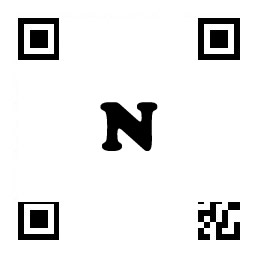- 商品介绍
- 规格参数
- 包装参数
- Panels for covering HGMD-curated whole genes and protein coding sequences (CDS)
- Single-day workflow with hybrid capture flexibility ranging from 30 minutes to overnight
- Reduced fold-80 base penalty that maximizes on-target coverage and lowers sequencing cost
- Eliminate data bottlenecks and reduce overall turnaround time with rapid data analysis and variant interpretation
Widespread adoption of exome sequencing has fueled many different, more cost-effective approaches to disease-based research. QIAseq Human Exome Kits can be used in a variety of applications that utilize exome sequencing, such as:
- Disease gene identification for rare and inherited disorders
- Population genetics and carrier screening
- Study of human disease pathways and mechanisms
- Study of pathogenic infection mechanisms
Disease gene identification and mutation analysis for rare and inherited disorders
Whole exome sequencing for rare disorders can be undertaken either as single exomes (proband [affected]-only) or as trio sequencing. Though the proband-only approach is more cost-effective, this typically results in a much higher number of variants compared to trio sequencing where both the biological parents are also sequenced in order to rule out private mutations and Mendelian inconsistencies, thereby narrowing down the set of variants for further investigation.
For mutation analysis in inherited disorders, exome sequencing is also becoming a widely used approach. By adopting an exome as a large panel from which disease-based gene sets can be screened, laboratories end up saving on reagent costs. In addition, labs can implement more standardized workflows, especially for automation, which decreases the introduction of type II errors. Furthermore, with the rapidly growing body of knowledge around human disease, the need to constantly update panels is mitigated by having an exome as a base panel since the exome already accounts for all the coding regions in the human genome.
Population genetics and carrier screening
The study of the pathogenesis of rare and complex diseases is complicated by the contribution of rare alleles that may exist in specific populations and variants that have a wide spectrum of allele frequencies that vary by ethnicity. Exome sequencing has been a tool widely used to profile various populations for such variants in order to better understand their frequencies within these specific groups. This enables better quantification of carrier risks, especially for debilitating diseases, enabling couples to plan better and make informed decisions, and for understanding susceptibility to the more common disorders that affect overall quality of life and/or impact lifetime healthcare costs.
Study of human disease pathways and mechanisms
The utility of exomes extends beyond just identifying the disease-causing variant. In the effort to understand the mechanisms that feed into and regulate the pathways that are directly implicated in disease progression, typically with the intent to target them for treatment, exomes have also become a useful tool in conjunction with transcriptome sequencing. By sequencing the exome, other variants that may be acting as modifiers can be identified, thereby highlighting candidate regulatory pathways.
Study of pathogenic infection mechanisms
Bacterial or viral infection mechanisms, as well as what makes people susceptible to infection, are important to understand in order to design preventive and therapeutic measures to counteract the spread of disease. Exome sequencing provides an approach for helping identify mutations within proteins, either expressed at the cell-surface or involved in other transport mechanisms, that may provide a path for the pathogen to enter and thrive within the human host environment. These types of studies are structured very similarly to population studies wherein results are correlated with metadata on the disease within the population in order to establish significant results.
| Feature | Actionable Exome | Carrier Panel | Mitochondrial Panel |
| Panel size | 12.3 Mb | 1.5 Mb | 16.6 kb |
| Kit type | Complete | Complete | Spike-in panel |
| Genes | 10,000+ | 448 | Full mitochondrial genome |
| 长度(mm) | |
| 宽度(mm) | |
| 高度(mm) | |
| 重量(kg) |


























 微信小程序
7X24小时在线咨询
微信小程序
7X24小时在线咨询